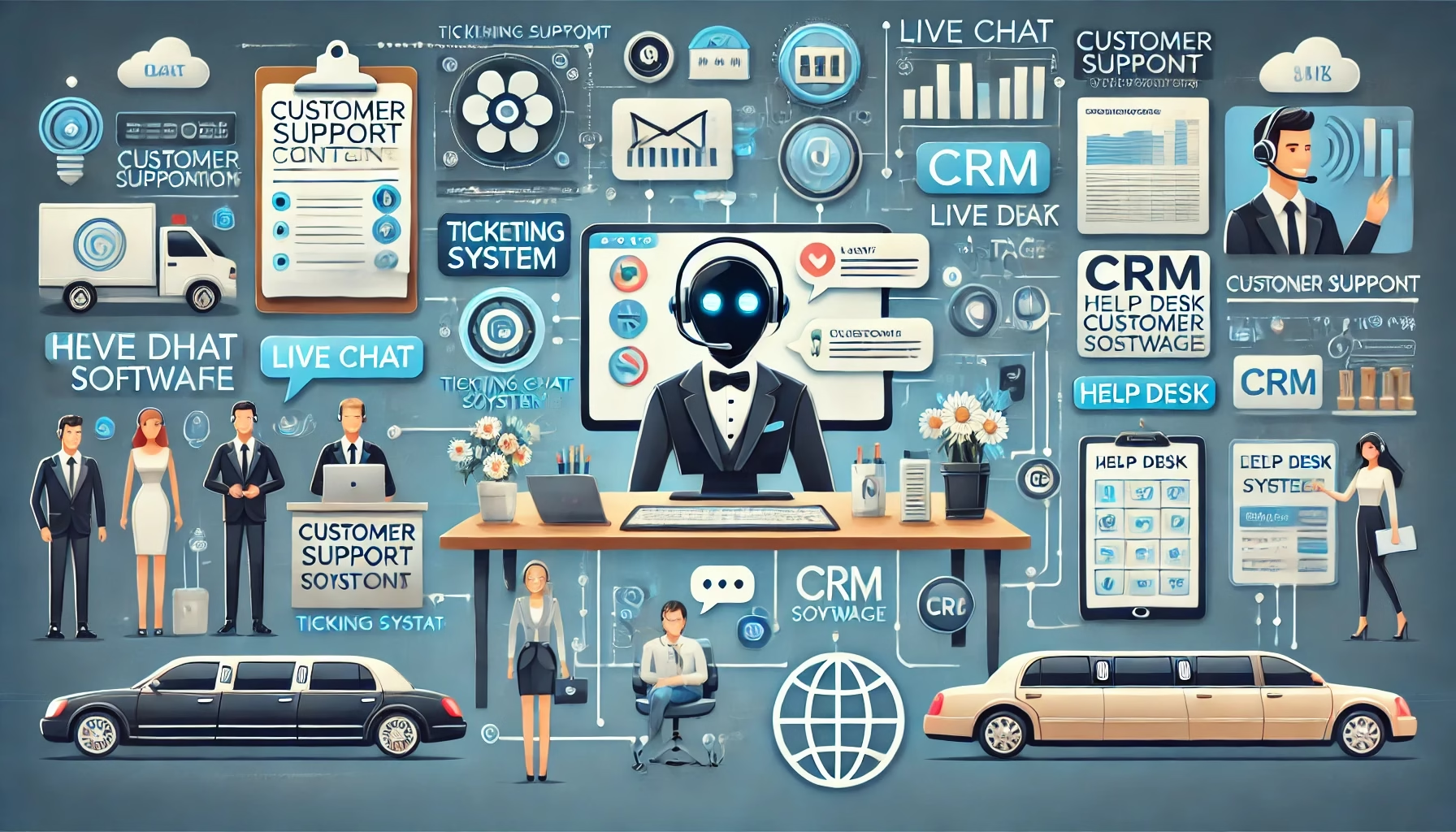Introduction
Building a remote dispatch team requires a thoughtful approach to ensure efficiency, collaboration, and customer satisfaction. Dispatch operations are the backbone of logistics, transportation, and limousine services. Remote work introduces challenges but offers unique opportunities for innovation and scalability. This guide will walk you through the key considerations and strategies to build an effective remote dispatch team, using “remote dispatch team building” as the central focus.
1. Understanding the Role of a Dispatch Team
The Issue: Complex and Multitasking Roles
Dispatch teams serve as the communication hub for businesses. They manage schedules, coordinate with drivers, handle customer inquiries, and ensure smooth daily operations. When the team operates remotely, the lack of in-person communication can make these multitasking roles even more complex. Miscommunications, delays, and technology gaps can disrupt efficiency.
Solutions: Defining Clear Roles and Responsibilities
- Set Clear Expectations: Outline each team member’s role. Define responsibilities like handling incoming requests, coordinating schedules, and resolving conflicts. Clear job descriptions reduce overlaps and confusion.
- Use Task Management Software: Invest in tools like Trello or Asana to assign tasks and track progress. These platforms allow remote teams to stay aligned and organized.
- Encourage Cross-Training: Equip your team with skills across different roles. Cross-training ensures continuity in case of absences or emergencies.
By defining roles and utilizing tools, you’ll create a seamless workflow in remote dispatch team building.
2. Embracing the Right Technology
The Issue: Lack of Centralized Systems
A fragmented tech stack often hinders remote dispatch operations. Without centralized systems, miscommunications and inefficiencies can arise.
Solutions: Investing in Centralized Dispatch Platforms
- Adopt Cloud-Based Dispatch Tools: Platforms like DispatchTrack or Samsara provide real-time tracking and seamless scheduling. Cloud-based systems allow team members to access the information they need from anywhere.
- Utilize Communication Tools: Tools like Slack and Zoom bridge communication gaps. These platforms ensure instant messaging and virtual meetings keep everyone in sync.
- Integrate CRM Systems: For limousine services, integrating dispatch platforms with CRM tools like HubSpot enhances customer service by consolidating client information.
When selecting technology, prioritize user-friendly interfaces and scalability for future growth.
3. Building a Strong Onboarding Process
The Issue: Inadequate Training for Remote Roles
Training remote dispatchers can be challenging without direct oversight. Employees may feel unsupported, leading to reduced productivity and engagement.
Solutions: Structured Training Programs
- Create Virtual Training Modules: Develop step-by-step guides and videos tailored to your software and processes. These modules ensure consistency in training.
- Offer Shadowing Opportunities: Pair new hires with experienced team members for virtual job shadowing. This practical approach accelerates learning.
- Schedule Regular Check-Ins: Weekly calls with managers help identify pain points and provide guidance. Use this time to review performance and address concerns.
By establishing a robust onboarding process, you can set up your remote dispatch team for success.
4. Ensuring Effective Communication
The Issue: Miscommunication in Remote Settings
Remote work often limits spontaneous conversations, leading to misunderstandings and delayed problem-solving.
Solutions: Encouraging Transparent Communication
- Implement Daily Stand-Ups: Short daily meetings foster transparency. Use these meetings to review priorities, share updates, and address roadblocks.
- Establish Communication Protocols: Define preferred tools for various tasks. For example, use Slack for quick updates and Zoom for detailed discussions.
- Promote Feedback Loops: Encourage team members to share feedback regularly. Open communication fosters trust and collaboration.
Clear and consistent communication is a cornerstone of effective remote dispatch team building.
5. Balancing Workloads Efficiently
The Issue: Unequal Task Distribution
In remote settings, some team members may feel overburdened while others lack sufficient responsibilities. This imbalance impacts morale and productivity.
Solutions: Utilizing Automation and Analytics
- Implement Automation Tools: Use automation for repetitive tasks like route optimization and report generation. Tools like OptimoRoute streamline workloads.
- Monitor Team Performance: Analytics dashboards help managers assess workload distribution. Addressing imbalances ensures equitable task assignments.
- Rotate Responsibilities: Periodic role rotation prevents burnout and keeps the team engaged.
Balancing workloads ensures every team member can perform efficiently and effectively.
6. Prioritizing Cybersecurity Measures
The Issue: Vulnerability to Cyber Threats
Remote work introduces security risks, especially when handling sensitive customer information in transportation and limousine services.
Solutions: Strengthening Cybersecurity
- Use Secure VPNs: Virtual Private Networks (VPNs) protect data transmissions.
- Implement Multi-Factor Authentication (MFA): MFA adds an extra layer of security to login processes.
- Train Employees on Cybersecurity Best Practices: Regular workshops on recognizing phishing scams and securing devices safeguard your operations.
Investing in cybersecurity protects your remote dispatch team and your business.
7. Fostering Team Culture
The Issue: Feeling Disconnected
Remote workers often feel isolated, which affects team morale and collaboration.
Solutions: Building a Strong Virtual Culture
- Host Virtual Social Events: Regular virtual happy hours or trivia nights build camaraderie.
- Recognize Achievements: Celebrate milestones with shout-outs or small rewards.
- Encourage Team Interaction: Use collaboration tools like Microsoft Teams for informal chats and brainstorming sessions.
A strong team culture ensures that employees stay engaged and connected.
8. Managing Time Zones
The Issue: Coordination Across Different Time Zones
Global teams face scheduling challenges when managing operations across time zones.
Solutions: Scheduling Strategically
- Overlap Working Hours: Identify overlapping hours for real-time communication.
- Use Scheduling Tools: Tools like Calendly help coordinate meetings across time zones.
- Assign Regional Teams: For limousine services, regional dispatchers ensure local expertise and time zone alignment.
Proactive scheduling ensures smooth collaboration in remote dispatch team building.
9. Maintaining Customer Satisfaction
The Issue: Reduced Customer Interaction
Remote teams may struggle to deliver personalized customer service.
Solutions: Improving Customer Communication
- Use CRM Tools: CRM platforms streamline customer interactions and track satisfaction metrics.
- Provide 24/7 Support: Hire team members across time zones to offer round-the-clock support.
- Regularly Collect Feedback: Surveys and reviews help identify areas for improvement.
Keeping customers satisfied should remain a top priority for remote dispatch teams.
10. Measuring Performance and Success
The Issue: Lack of Clear KPIs
Without measurable goals, it’s difficult to evaluate the success of your remote dispatch team.
Solutions: Establishing KPIs and Monitoring Progress
- Define Key Metrics: Track metrics like response times, customer satisfaction scores, and task completion rates.
- Use Performance Dashboards: Dashboards provide real-time insights into team productivity.
- Schedule Performance Reviews: Regular reviews ensure accountability and allow for adjustments.
Measuring performance helps maintain high standards and fosters continuous improvement.
Conclusion
Building a remote dispatch team involves balancing technology, communication, and culture to achieve operational success. With careful planning and strategic execution, your team can overcome the challenges of remote work while delivering exceptional results.
Looking to streamline your dispatch operations? Consider the expert dispatch and customer support services from Saztech Solutions. Their solutions can help you optimize your operations and achieve your business goals.
Home | About Us | Pricing | Get Started | FAQ | Dispatch Daily | Contact Us
WhatsApp | Facebook | LinkedIn





Leave a Reply